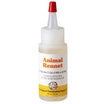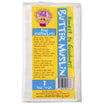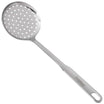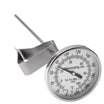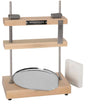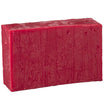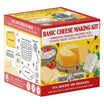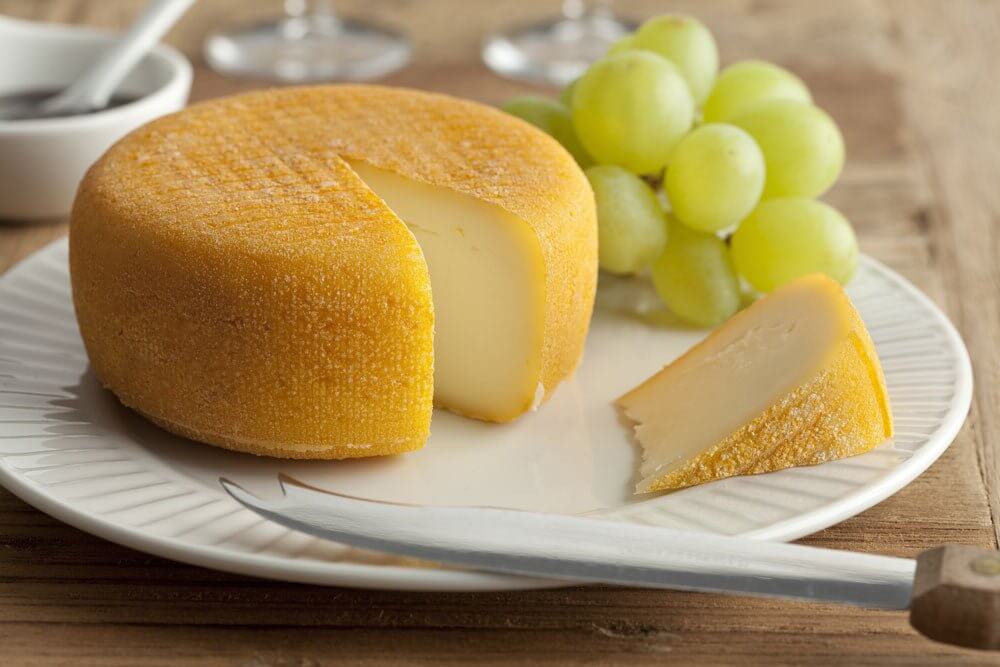
Port Salut / Saint Paulin Cheese Making Recipe
Developed long ago by the Trappist Monks, it goes by the name of 'Port du Salut' meaning 'the Gates of Salvation.' It is also known as 'Saint Paulin' these are both essentially the same cheese.
-
Yield
2 Pounds
-
Aging Time
~2 Months
-
Skill Level
Intermediate
-
Author
Jim Wallace

Ingredients
Total price for selected items: Total price:
Instructions
Guideline for Making Port du Salut / Saint Paulin
Creating this recipe was an interesting research project from its history to the process of making cheese. During my research, I managed to find no less than six different directions to take this recipe in. There were multiple variations, but my goal was to find what I felt to be most in line with what the Abbey at Port du Salut traditionally produced. The recipe below is derived from older recipes, several of which were written between 1900-1936.
The guide below is based on a slow acid development using:
- A small amount of natural Mesophilic Culture
- Curd washing to remove lactose
- Salt, added to the wash water, to slow bacteria
This is to develop a moist, low acid cheese.
This recipe is for 2 gallons of good quality pasteurized milk of about 3.25% butterfat, the result will be 2.25-2.5 lbs of cheese, depending on the final moisture.
Note: If using raw milk, use 20-40% less culture and 15-25% less rennet, because raw milk has its own natural culture and the calcium/protein balance is so good that the curd forms with less rennet. You should also skim high fat raw milk back to about 3.25-3.7% butterfat.
-

Heat & Acidify Milk
Begin by heating the milk to 88F (31C).
You do this by placing the milk in a pot or sink of very warm water. Or, in a pot on the stove, just be sure to heat the milk slowly and stir it well as it heats
Once the milk is at 88F the culture and b. linens can be added.
To prevent the powder from caking and sinking in clumps, sprinkle the powder over the surface of the milk and then allow about 2 minutes for the powder to re-hydrate before stirring it in.
Allow the milk to ripen for about 30 minutes (less time than many other cheeses) while maintaining the temperature.
-


Coagulate with Rennet
Next add about 1/2tsp (2.5ml) of single strength liquid rennet. Dilute this in about 30-40ml of cool non-chlorinated water.
Stir this in gently for about 1 minute in a bottom to top manner and make sure the milk goes still when done.
The milk now needs to sit quiet for 30-40 minutes while the culture works and the rennet coagulates the curd. You will notice the milk thickens at about 12 minutes but allow it to go the full time of 30-40 minutes.
The thermal mass of this milk should keep it warm during this period. It is OK if the temp drops a few degrees during this time.
During the wait for coagulation, make sure your cheese molds and cloth are sanitized. I always keep a pot of warm water (~145F) to sanitize with. This seems to be the most sensible way to sanitize molds, cheese cloth, and other heat stable tools to me.
Line your molds with the sanitized cheese cloth.
-


Cut Curds & Release Whey
Before the cutting, you are looking for a clean break when you test the curd, by breaking the surface as shown here. The whey rising in the cut should be neither too cloudy (cut too soon) or too clear (cut too late).
Cut the curds to about 3/8" inch and then allow the whey to rise for about 3-5 minutes.
Next stir the curds gently for another 5 minutes.
-

Cook the Curds
Now it is time to begin drying out the curds. This will be done by increasing the heat slowly to 102F (39C). The heat needs to be increased slowly over a 15 minute period.
The final curds should be moderately firm and should be examined to make sure that enough moisture has been removed. The curds should have a moderate resistance when pressed between the fingers.
When this point is reached, the curds can be allowed to settle under the whey.
-




Wash the Curds
This step will slow the bacteria development for a less acid cheese, using several functional controls:
- Whey removal, takes out much of the lactose used as food by bacteria and slow the acid development.
- Cool water, slows the bacteria activity as it moves back to the original temperature.
- Salt addition, slows the bacteria and help remove moisture from the curd.
Begin by first preparing the curd wash; this is a light brine made by adding 2 oz. salt to 1/2 gallon of 60F water.
Next remove about 40-50% of the whey, leaving about 1inch of whey above the curd bed.
Give the curd mass a quick stir to separate the curds.
Then add enough cool brine to bring the temperature back down to 88F (add a bit more cold water if needed).
Continue to stir this for the next 20-30 minutes to achieve the proper dryness before molding the cheese.
NOTE: The whey removed above can be a great source for making a wonderful sweet ricotta
-


Form the Curds
The dry curds can now be transferred to the cloth lined molds that have been sanitized and prepared. Make sure you can accommodate the draining whey that will be released.
Begin by giving the curd a quick final stir to separate the individual curds.
Remove the whey to the curd level and begin transferring the curds with the remaining whey to the molds.
Use firm hand pressure to pack the curds into the mold.
The curd mass will be heaped well over the basket surface initially as shown in the photos here.
In using the basket molds, the curds should be allowed to drain as the curd is transferred.
Note: The Basket Mold takes a little patience to get all of the curds into it, but will form a nice,chubby little cheese. If looking for a good follower combo as shown in the photos below for pressing, Ricki has both the stainless plate and plastic disc available on her web page. They fit the basket perfectly
The Stainless-6inch mold will be a bit easier to work with and will make a wider low form cheese, not quite as high as the basket mold. They both will produce a very nice cheese when ripened.
-




Pressing
Once the curds are in the basket, fold the cloth as evenly as possible over the curds and place the followers evenly to distribute the weight.
For pressing, we should begin very light and slowly increase the press weight to a moderate level, turning and re-wrapping the cheese in between each pressing, following the schedule below:
- 30 minutes at 3-4 lbs.
- 60 minutes at 3-4 lbs.
- 60 minutes at 8-12 lbs
- 4-6 hours at 8-12 lbs., turning several times during this period
As you can see very little weight is required for this cheese.
It is essential that the temperature of the cheese during pressing be kept above 75F because the bacteria have not finished converting the remaining lactose. This should be maintained for 16-20 hrs to assure a complete fermentation.
When the surface is consolidated (8-10 hrs), the weight can be removed from the cheese, but do maintain the temperature.
-

Salting
You will need a saturated brine prepared for salting this cheese, find all of the details you need on brining here.
A simple brine formula is:
- 1 gallon of water
- 2.25 lbs of salt
- 1 Tbs calcium chloride
- 1 tsp white vinegar
- Bring the brine and cheese to 50-55°F before using
The cheese now needs to sit in the brine for about 4 hours. The cheese will float above the brine surface, so sprinkle another teaspoon or two of salt on the top surface of the cheese.
Flip the cheese and re-salt the surface about half way through the brine period.
At the end of the brine bath, wipe the surface and allow the cheese to surface dry for a day before moving to a plastic box with cover to maintain the higher moisture needed for aging this cheese. The surface will begin to soften as the salt migrates into the cheese over the next several days.
-

Aging
The cheese needs to be kept at 65-68F and a moisture of 92-96%.
The higher moisture and temperature will encourage the new surface to develop as the cheese ages.
Hold cheese 3 days before initial wash by simply flipping it and returning to its covered box (higher moisture).
Prepare the first surface wash a day before application with 1 cup cool water +1 tbs. salt+1/16tsp. B.linens. Hold this brine overnight for bacteria to develop before using it to wash the cheese surface.
On day 3 following the brine salting, wash the cheese surface with a cloth dipped in the above brine.
Then on day 7 and 10, prepare the same brine without B.linens and wash the surface again.
On day 14 wash all surface mold away (remember, it is just a mild flavor you are after for this cheese).
Then hold at 40F maintaining the high moisture for 3-6 weeks depending on your taste. The longer it ages the softer and more complex the flavor becomes.
Cheese Making Supplies
Related Products
You May Also Like
















